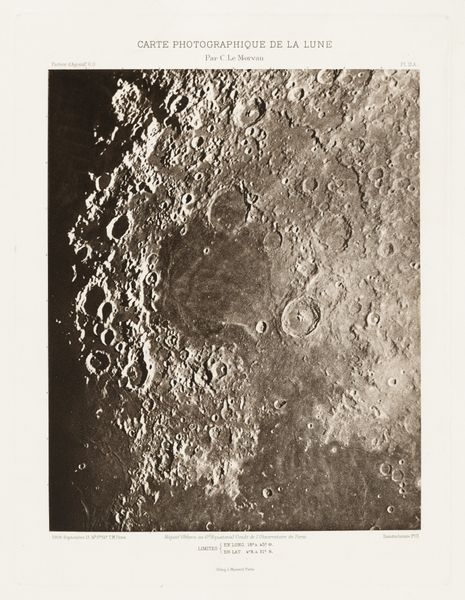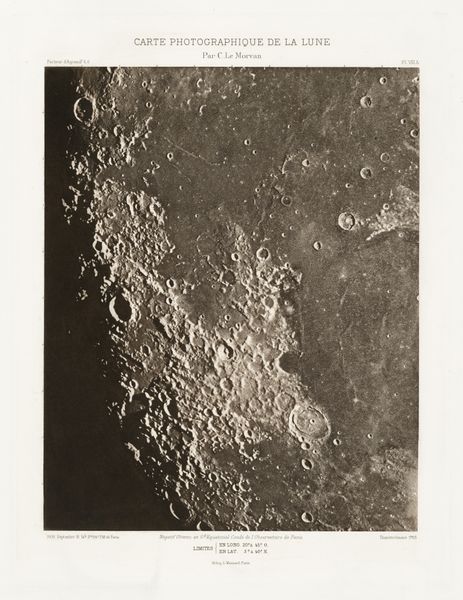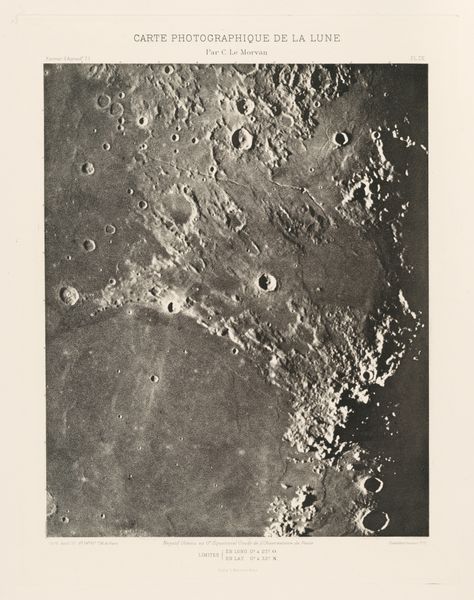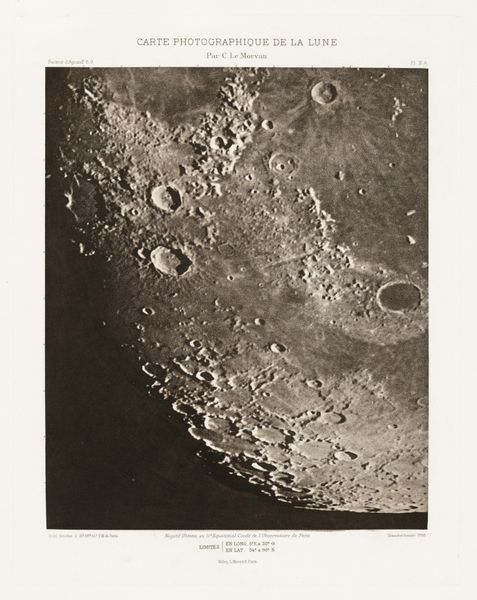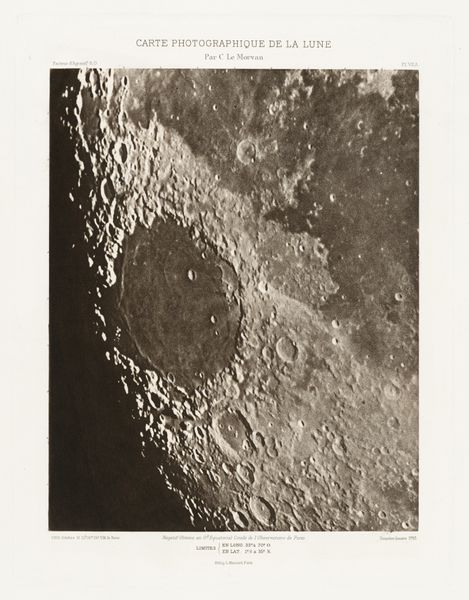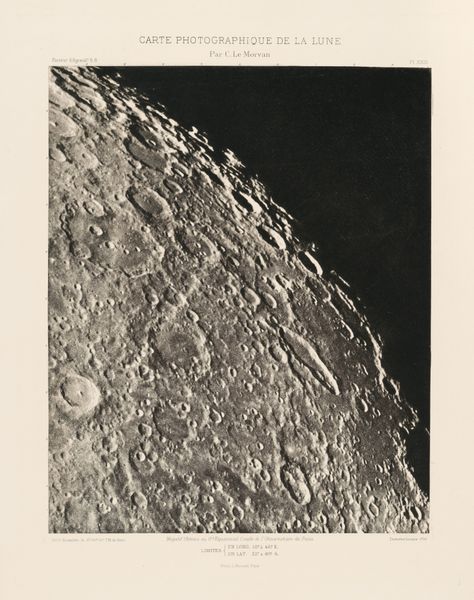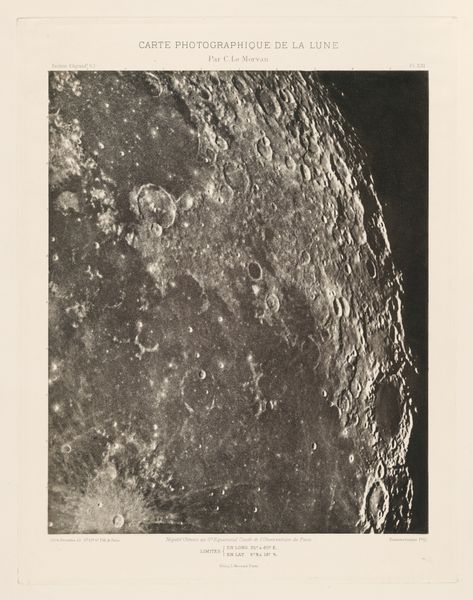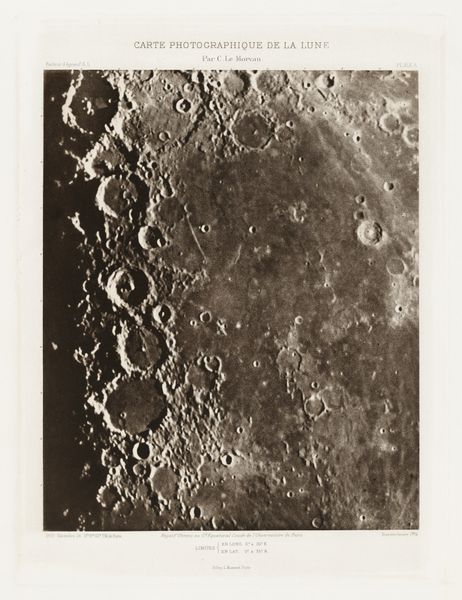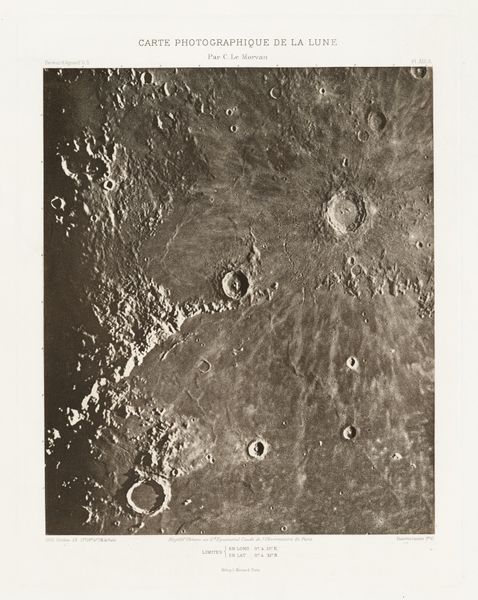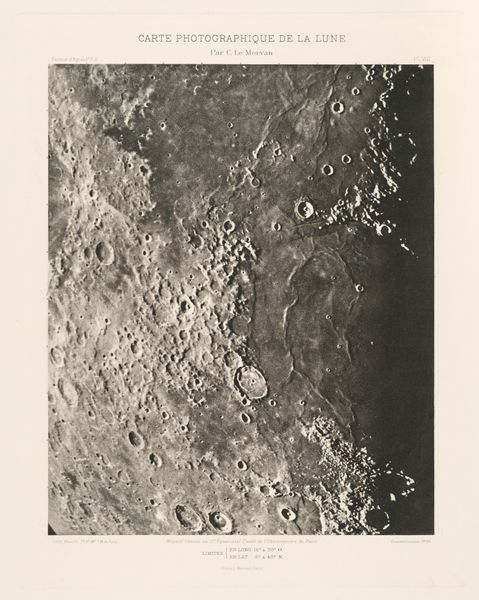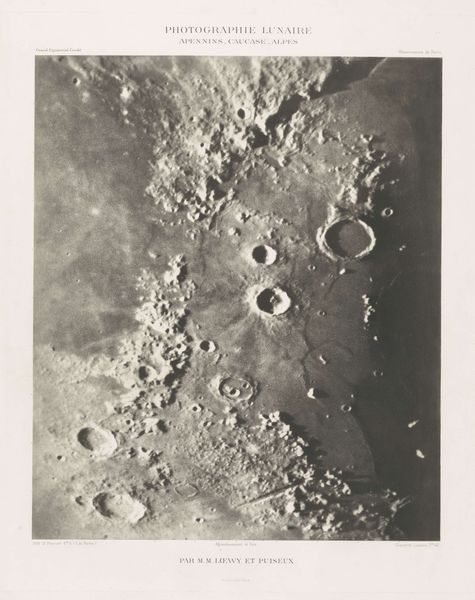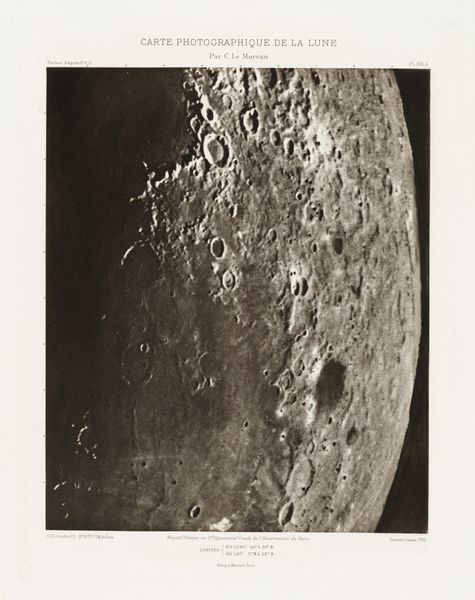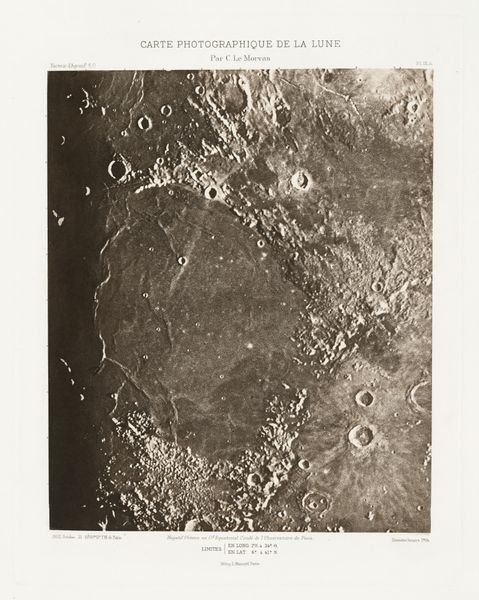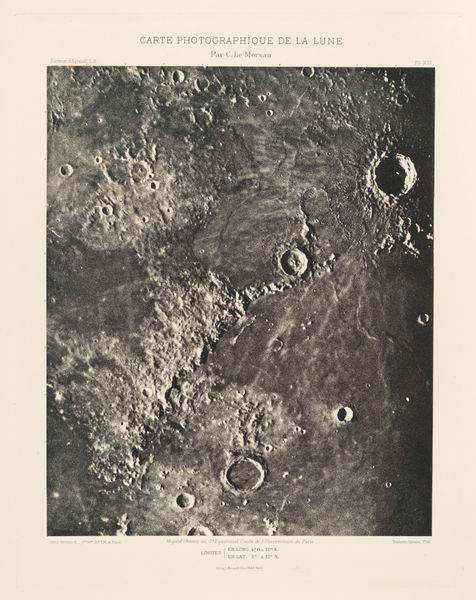
Carte photographique de la lune, planche II (Photographic Chart of the Moon, plate II) Possibly 1902 - 1914
0:00
0:00
print, photography, gelatin-silver-print
#
still-life-photography
# print
#
photography
#
geometric
#
gelatin-silver-print
Dimensions: image: 31.1 × 25.5 cm (12 1/4 × 10 1/16 in.) plate: 38.9 × 29.5 cm (15 5/16 × 11 5/8 in.) sheet: 49 × 37.9 cm (19 5/16 × 14 15/16 in.) tissue: 42.55 × 37.47 cm (16 3/4 × 14 3/4 in.)
Copyright: National Gallery of Art: CC0 1.0
Curator: Here we have Charles Le Morvan's "Carte photographique de la lune, planche II," a gelatin silver print potentially dating from between 1902 and 1914. Editor: Immediately, I’m struck by the intense texture, the pitted, almost scarred landscape that fills the frame. It’s stark, monochrome, and evokes a sense of ancient history. Curator: Indeed. The photograph resonates with themes of scientific exploration and the impulse to document the cosmos, particularly as those themes intersect with early 20th-century imperial projects of mapping and claiming the unknown. Who benefits, we might ask, from such knowledge and visual representations? Editor: It's interesting you mention the power dynamic because to me, the craters themselves—the circles, the shadows—feel primal, almost totemic. They whisper of lunar deities, of the cyclical nature of time, and perhaps humanity’s enduring fascination with the 'woman in the moon'. It also brings forth, symbolically, an enduring question. Is this the ‘dark side’ that we imagine? Curator: That’s a powerful reading, though I’d push further. Consider the photographic medium itself: a technology built upon a history of scientific objectification. To what extent does this process of observing and naming reinforce existing structures of power, even in the context of ostensibly neutral scientific inquiry? Editor: Perhaps, but there is something enduring beyond these themes you are mentioning. The circles speak universally. The act of representing the moon has roots going way back. We imprint symbolism on its surface, consciously and subconsciously, layering new meanings onto what is fundamentally a celestial object of great beauty. What this says about humans is what holds true. Curator: Ultimately, I agree, this photograph embodies complex layers of meaning. It offers us a view onto the past as well as raising pertinent questions about contemporary interpretations, social structures, and systems of thought. Editor: Indeed. From a symbol of wonder and feminine, maternal power to a blank slate on which empires mapped their aspirations, this "Photographic Chart of the Moon" reveals that no image, however seemingly straightforward, is ever simply neutral.
Comments
No comments
Be the first to comment and join the conversation on the ultimate creative platform.
